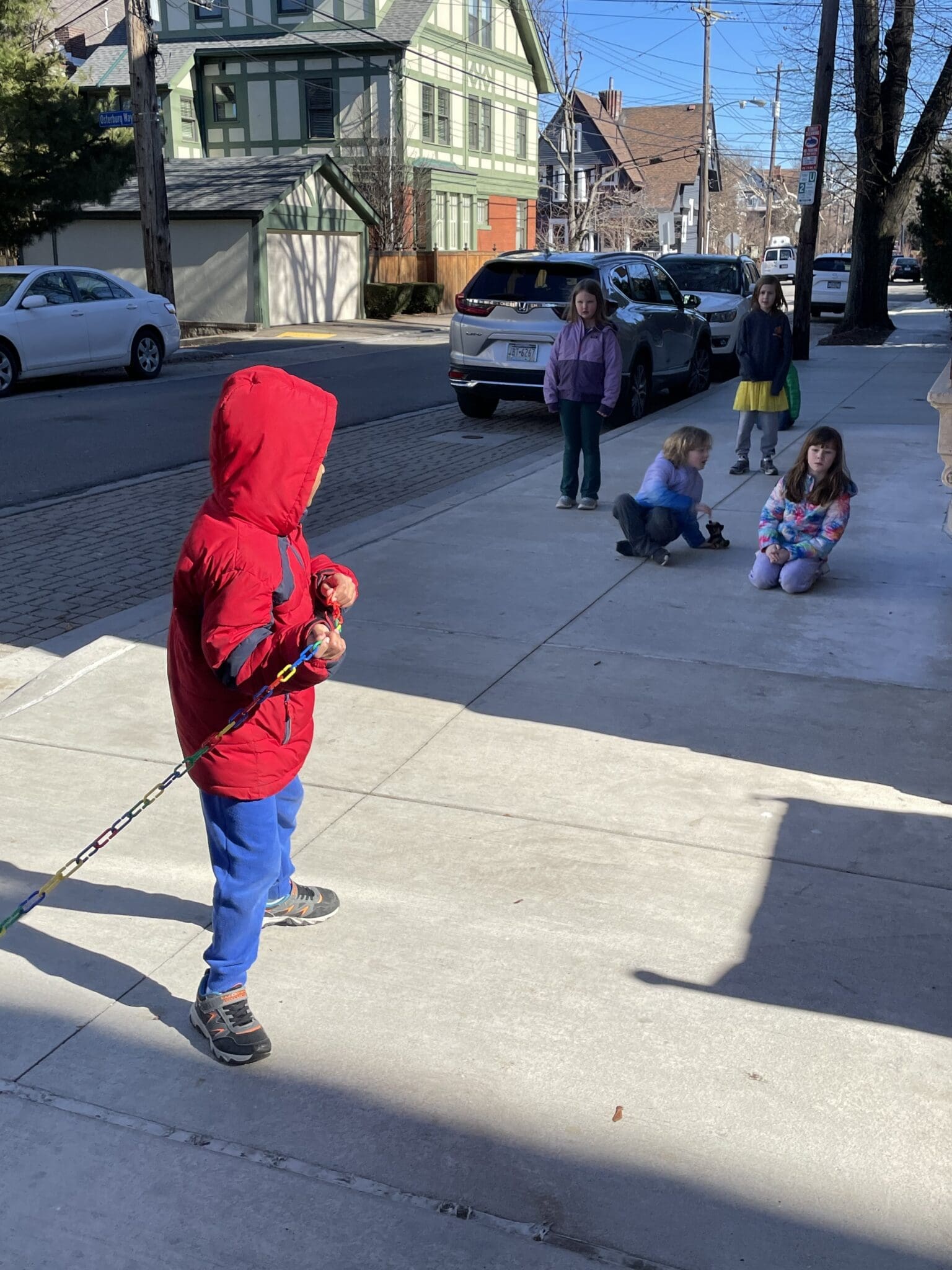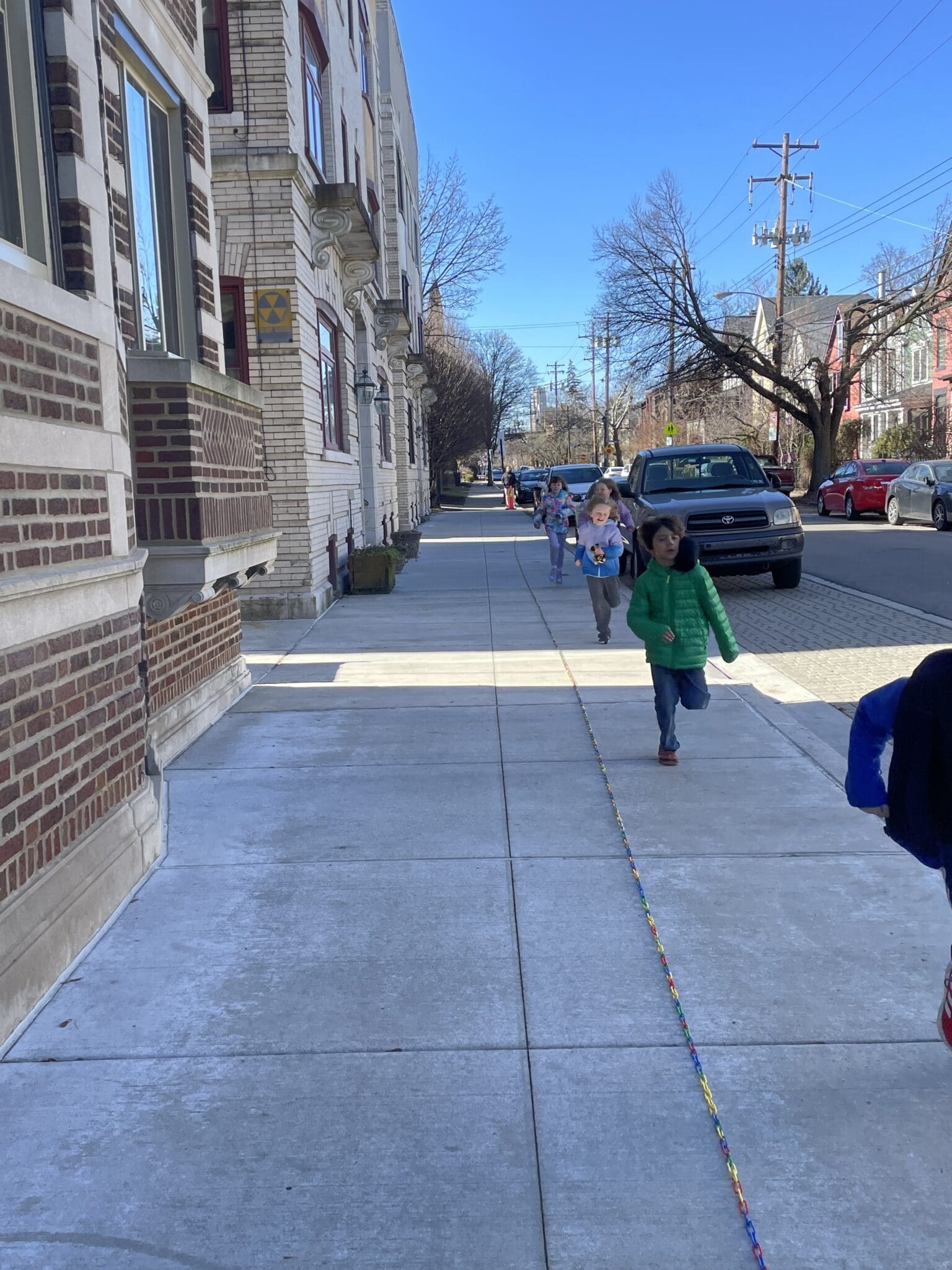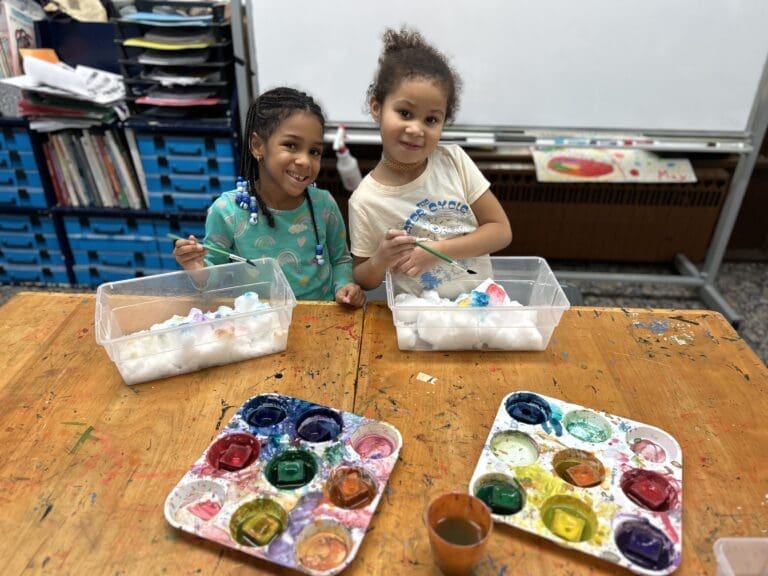Why Hands-On-Learning?

As I was giving a prospective family a tour the other day, second grade was a flurry of activity. They were in the class, they were outside the class, with a notebook and pen, they were on a mission. One could not have staged a better way to show a prospective family how hands-on-learning happens at KAS.
As you might know, Mr. Bob is about to go on paternity leave, and we could not be happier for the expansion of the KAS community. We are so grateful for Ms. Jenna’s help in the classroom and her willingness to step in at any moment. In 2020 KAS was fortunate when Bob walked in for an interview and became the second grade teacher. Bob’s classroom is a place to help children build awareness for themselves as learners and as people. He encourages the students to advocate for their needs, figure things out for themselves, ask for help when they need it, instilling confidence as they learn. Mistakes are a natural part of learning and Bob wants the children to recognize their mishaps and mistakes as part of their learning, all while providing the students with various methods to learn.
During a reading lesson, students were learning about making inferences but not quite grasping the concept since they already knew what happened in the story. Ms. Jenna was drinking her morning coffee and posed a question as to why she might be drinking coffee. The students offered up a variety of reasons getting closer to understanding making inferences. Then the question was posed about Mr. Bob’s watery eyes the day before as he sat in one corner of the room but not in another corner of the room. Why would Mr. Bob’s eyes only water on one side of the room? Suddenly every student in the room became a mini detective with their notepads in hand, they were looking for more clues. The conclusion that they came to was that Mr. Bob must be allergic to something on one side of the room where his eyes were watering.
It is not unusual to see students learning in the hallways of KAS. The other day as I was stepping over second graders in the hallways they were linking chains and unifix cubes across the floor as far as the eye could see, while another student was crawling around with a yardstick. They then took the chain outside and estimated it to the sidewalk, they determined it to be 29 meters, 1 meter less than the size of a blue whale. They then finished measuring 116 meters to determine how much farther that was from the original starting point. The students then proceeded to run the distance back to the school. As a culminating activity, the students were encouraged to write either a haiku, tanka, or rhyming poem. Bob was reinforcing their math lesson on measuring and comparing meters and centimeters, yet I think they learned more than just measurement.






If only it was possible to measure the enthusiasm of Mr. Bob’s classroom. If anyone could invent a machine to do that, it would be Mr. Bob and his second graders, but until they do, enjoy their enthusiasm as they tell you about what they are learning.
To read more about the benefits of hands-on-learning click here,
https://newschoolarch.edu/what-are-the-benefits-of-hands-on-learning
https://www.thethinkingkid.org/post/the-importance-of-hands-on-learning



